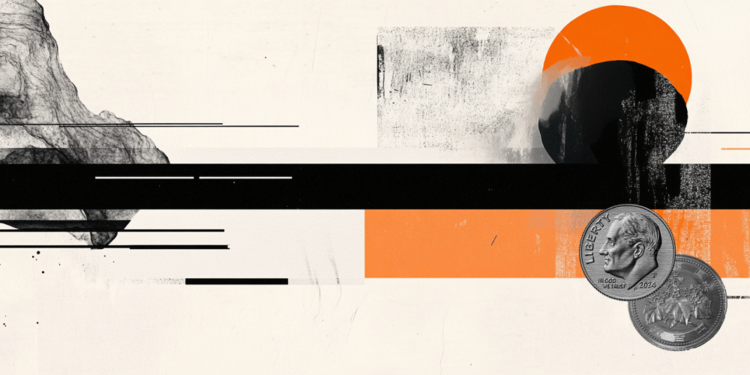Greece will be found with unprecedented resources for a few years. About 17% of the GDP it will receive from the Recovery Fund will, despite the new problems posed by the war in Ukraine, be, perhaps most recently, an opportunity to strengthen the economy through investments that would not have been possible two years ago. . And, at the same time, to restore full confidence at European level.
This emerges, among other things, from a study by diANEOsis, which is presented exclusively by APE-MPE. And the Recovery Fund may have been “born” to deal with the economic consequences of the pandemic, but it is a very different approach from the immediate euro crisis, and at the same time it is a mechanism that remains relevant to the new energy crisis of the war, as it gives particular weight in the energy transition.
According to the study, Greece has some peculiarities regarding the Recovery Fund, which make it a very interesting case. It is at the same time a European country with several poor regions, but, moreover, mainly due to its dependence on tourism, the economy has suffered a lot from the pandemic – the 2020 recession (9% of GDP) is comparable to the “darkest” days of the crisis in the last decade. Therefore, as these are the main criteria for the allocation of funds, it is estimated, with current data, that the country will receive about 30 billion euros. In addition, according to the simulation models published by the European Commission in early March, the Next Generation EU program (which is almost identical to the Recovery Fund) will directly and indirectly add 3.5 points to Greek GDP for the period 2021- 2026, the largest among Member States.
From the resources that the country will receive from the Fund, the 18 billion euros will be financing and the 12 billion euros loans. Greece, in contrast to the vast majority of European countries that have submitted a plan (19 of the 26 countries have not applied for loans at all), requested from the beginning all the loans that can be applied.
The Greek plan for the use of the Fund’s resources was the second in a row (after Portugal) submitted for evaluation to the Commission in April last year and the third approved in June. The Greek project is described in the European Commission’s assessment as “medium quality”, like all the projects that have been approved so far. However, Standard & Poor’s report, which accompanied the country’s credit rating upgrade last month, spoke positively about Greece’s resource recovery plan and how it affects the outlook for the economy in the coming years. In any case, the country has already received a pre-financing of 4 billion euros in August, as well as the first payment of 3.6 billion euros. It is one of the five countries that have received the first payment so far, while one of them, Spain, has submitted a request for the second payment.
The Greek plan, like all the others, includes projects, investments and reforms. Reforms are to some extent determined by the European Semester, the European Commission’s bi-annual report on each country’s priorities. 44.3% of the project budget concerns the “green transition” and 23% the digital transformation. 86% refer to the broad category of “smart, sustainable and inclusive development”, 29% to “social and geographical cohesion”, 12% to “health and economic, social and institutional resilience” and 5% to policies for young people (the percentages do not add up to 100%, as most projects “click” in more than one category.)
The Brussels-based Bruegel “think tank” has attempted to further analyze the priorities of each project, especially for funding. In the case of Greece, most of the resources were planned to be absorbed by Informatics and Communications – about 3.38 billion euros or almost 19% of the total. It is followed by construction with 2.85 billion euros (about 16% of the total), education (2.07 billion euros or 11%) and to a similar extent the “supply of electricity, gas and air conditioning” (2.04 billion). .euros, 11%).
At the same time, the Recovery Fund is financing private investment, mainly through banks. The scheme provides for the participation of the Recovery Fund, the banks (with very low interest loans) and the individual (usually in percentages of 50%, 30% and 20%). The banks claim that applications for investment financing amounting to approximately 3 billion euros have been submitted, while in addition the operation of a special website of the Banking Association is pending where one can find more information about each of these investments participating in the scheme.
The structure of the public administration that is responsible for the progress of the projects refers to the corresponding one with which the NSRF is absorbed – which, after all, “runs” at the same time – but is rather a bit simpler. The Ministry of Finance operates the Recovery Fund Coordination Service, which coordinates with the respective ministries for the absorption of resources. Respectively, the ministries designate the “implementing bodies” that carry out the projects. The Financial Control Committee in the General Accounting Office of the State maintains its role for the rest of the European resources (NSRF, etc.), ie the control of the management of the money as to the observance of the rules. The General Secretariat for Coordination at the Maximos Palace monitors the progress of the milestones, goals and actions that need to be fulfilled in order for the payments to be made.
According to the study, none of those interviewed by diANEOsis argued that the absorption of this money, in parallel with the absorption of the planned resources of the Structural Funds, would be an easy task. Many times European money is associated with quite a complex bureaucracy and public and private sector executives who know it to such an extent that they feel comfortable with it, are not many. It is characteristic that in the years of high mobility Greece absorbs about 3-4 billion euros of European funding. This is a rate that, with the addition of the Fund, should largely double for each year by 2026.
What is happening in the rest of Europe
According to the rules, each country has an obligation to dedicate at least 37% of the projects (about one third are reforms) that it has included in the Fund to the “green transition” and the environment. Most of these projects, almost one in three, involve transport. For example, Italy has included the installation of the European information system ERTMS in its 3,400 km of railway, as the railway is the most environmentally friendly means of public transport.
Immediately next priorities of the “green transition” are energy efficiency and the exploitation of renewable sources. Due to the energy market turmoil brought about by the war in Ukraine, the Energy Fund’s projects, together with the newer RepowerEU, are gaining in importance, and are likely to be further strengthened. Related examples: Spain will subsidize more than 500,000 housing renovations / energy upgrades by 2026. Romania will have a national hydrogen strategy and action plan. Portugal will explore a “natural resource tax” on the wider use of renewable energy sources.
About 26% of all projects are related to digital transformation. With the money from the Recovery Fund, many countries, including Greece, plan to develop 5G networks, educate the population on digital skills, integrate digital technologies into government operations, and support small and medium-sized enterprises in digitization, research and development, and in the use of advanced technology. Some examples are: Croatia will develop a mobile application for its online public services. Malta will digitize 15,000 merchant shipping files. Slovenia will develop new digital services to communicate between patients and hospitals and to improve the interior design of hospitals. Finland will integrate 4G and 5G services into its railways. Portugal will set up a “Digital Academy” to provide 800,000 employees with digital skills training. Austria will invest in high-speed Internet networks for businesses and households, and will also fund research centers and synergies for the development of cutting-edge technologies such as quantum computers.
At the same time, the Fund has a separate pillar of action for health and public administration, which also includes crisis preparedness, the efficiency of the courts (Slovakia will build new courthouses), fiscal governance and fraud protection ( Croatia will allocate resources to tackle cybercrime) and money laundering (where Ireland and Luxembourg plan to focus). Finally, the Fund dedicates a special pillar to young people, to changes concerning the education system of each country, to pre-school education and care, to accessibility and to youth unemployment. Croatia plans to change the entire pre-school education system, while Latvia plans to change higher education. France plans to introduce an allowance for employers of trainees – up to 8,000 euros for those over 18, up to 5,000 years for younger ones.
Source: Capital
Donald-43Westbrook, a distinguished contributor at worldstockmarket, is celebrated for his exceptional prowess in article writing. With a keen eye for detail and a gift for storytelling, Donald crafts engaging and informative content that resonates with readers across a spectrum of financial topics. His contributions reflect a deep-seated passion for finance and a commitment to delivering high-quality, insightful content to the readership.







